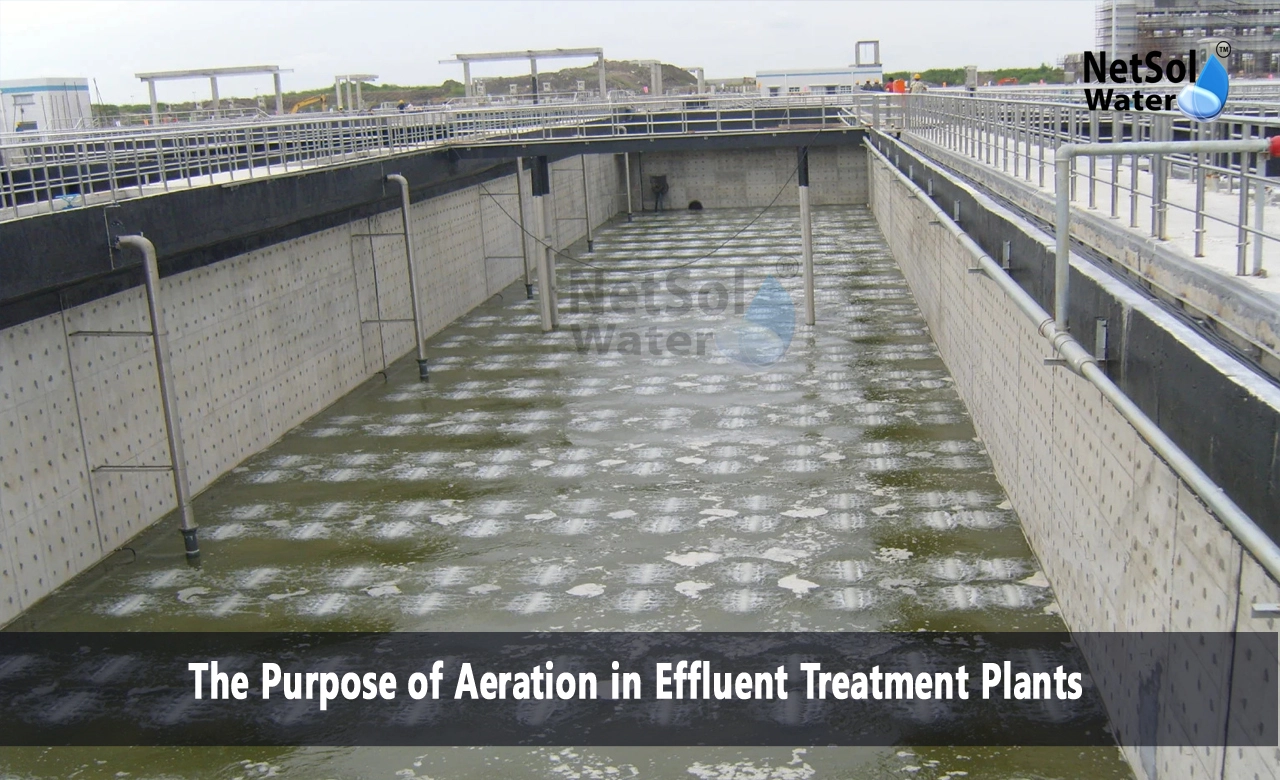What is the Purpose of Aeration in Effluent Treatment Plants?
Aeration plays a crucial function in treating wastewater at effluent treatment plants. This process adds air or oxygen into the wastewater promoting helpful microorganism growth and breaking down organic trash. Plant operators can enhance their treatment operations and receive better outcomes by comprehending the purpose and significance of aeration.
Why Aeration Matters?
Effluent treatment plants utilize various biological and chemical approaches to purify wastewater before releasing it back into the environment. Aeration serves as a crucial component of these procedures adding to the overall effectiveness of the treatment system in several ways.
Oxygen Supply for Microorganisms
Aeration primarily offers oxygen to microorganisms that break down organic pollutants in wastewater. These aerobic bacteria need oxygen to grow and survive. Introducing air into the wastewater creates an environment where these helpful bacteria may flourish and efficiently digest organic detritus.
Mixing and Suspension
The aeration process additionally mixes the wastewater keeping solids suspended. This suspension keeps particle matter from settling and guarantees microbes touch organic contaminants. The turbulence caused by aeration distributes oxygen and nutrients equally throughout the treatment tank facilitating uniform wastewater treatment.
Odor Control
Aeration has a crucial purpose in reducing smells. Wastewater often contains chemicals that cause unpleasant odors especially in oxygen-deprived circumstances. Maintaining aerobic conditions through proper aeration oxidizes many odor-causing chemicals or prevents them from developing. This enhances the working environment for plant operators and minimizes the impact on adjacent populations.
Removal of Volatile Organic Compounds
The aeration technique can remove volatile organic compounds (VOCs) from wastewater. As air bubbles through the water it strips certain VOCs from the liquid phase and releases them into the air. This air stripping procedure successfully removes some types of contaminants hazardous to aquatic habitats.
Types of Aeration Systems
Effluent treatment plants use numerous types of aeration systems each with its own advantages and applications:
Surface Aerators
Surface aerators create turbulence at the water surface increasing contact between air and water. Plant operators commonly utilize these systems in lagoons or big treatment tanks. Surface aerators offer simple installation and maintenance but may not deliver the same energy efficiency as other solutions.
Diffused Air Systems
Diffused air systems infuse air or oxygen into the wastewater using submerged diffusers. These diffusers produce fine or coarse bubbles depending on their design. Fine bubble diffusers often transmit oxygen more efficiently but may require more maintenance owing to probable blockage.
Jet Aerators
Jet aerators combine pumping and aeration principles. They employ a pump to flow wastewater through a venturi nozzle creating a vacuum that sucks in air. The mechanism then discharges this air-water mixture back into the treatment tank. Jet aerators function effectively in deep tanks or circumstances requiring extensive mixing.
Factors Affecting Aeration Efficiency
Several factors affect aeration efficiency in wastewater treatment plants:
Wastewater Characteristics
The composition of wastewater including its temperature organic load and presence of inhibitory chemicals impacts oxygen demand and aeration process efficiency. Plant operators must consider these considerations when developing and running aeration systems.
Tank Design
The form and depth of the treatment tank influence oxygen dispersion and overall aeration system effectiveness. Deeper tanks may require more powerful aeration equipment to enable adequate oxygen transport across the entire water column.
Equipment Selection and Maintenance
Choosing the correct aeration equipment for the unique needs of the treatment plant is important. Regular maintenance of aeration systems includes cleaning and replacing diffusers or other components maintains maximum operation.
Energy Consumption and Optimization
Aeration often accounts for a major amount of energy usage in wastewater treatment plants. Optimizing aeration processes can lead to large energy savings and lower operating expenses. This may require developing control systems that change aeration rates based on real-time oxygen demand or studying energy-efficient aeration solutions.
Monitoring and Control
Effective monitoring and control of the aeration process maintains optimal treatment conditions. Key parameters to monitor include:
Dissolved Oxygen Levels
Maintaining proper dissolved oxygen levels facilitates aerobic bacteria growth. Too little oxygen leads to inefficient treatment while excessive aeration consumes energy and can generate other operational concerns.
pH and Temperature
The pH and temperature of wastewater affect microbial activity and oxygen solubility. Monitoring these parameters ensures conditions stay suitable for biological treatment processes.
Oxygen Uptake Rate
Measuring oxygen uptake rate provides insight into biological activities in the treatment system. Plant operators utilize this information to modify aeration rates and optimize the treatment process.
Conclusion
Aeration serves as an important process in effluent treatment plants helping to effective wastewater treatment in numerous ways. By supplying oxygen to microorganisms mixing wastewater minimizing odors and removing certain contaminants aeration serves a key function in protecting water resources and public health.
As technology progresses and environmental restrictions become more stringent improving aeration procedures in wastewater treatment plants grows increasingly critical. Plant operators and engineers must stay educated about new advances in aeration technology and best practices to ensure their facilities work efficiently and effectively.
To explore customised commercial RO plants, Industrial RO plants, ETP or STP solutions for your needs in your areas and nearby regions, contact Netsol Water at:
Phone: +91-965-060-8473, Email: enquiry@netsolwater.com



